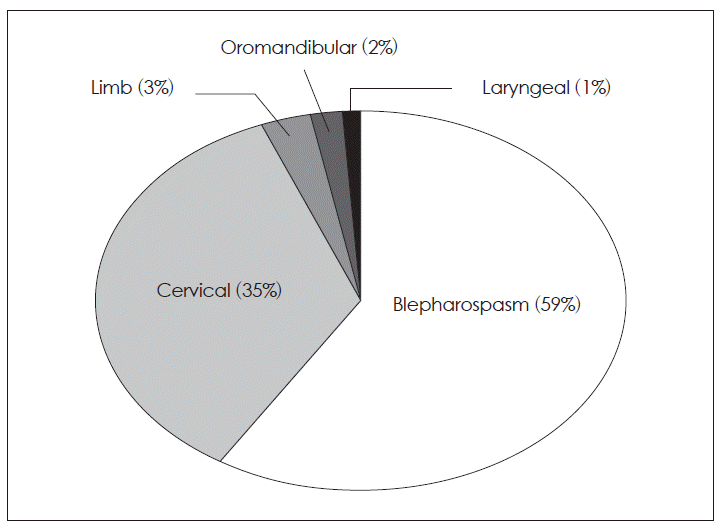Articles
- Page Path
- HOME > J Mov Disord > Volume 5(1); 2012 > Article
-
Original Article
Botulinum Toxin Clinic-Based Epidemiologic Survey of Adults with Primary Dystonia in East China - Li Wanga, Xingyue Hua, Chunfeng Liub, Yiwen Wuc, Changqing Wangd, Zhiqiang Wange, Jun Chenf
-
Journal of Movement Disorders 2012;5(1):9-13.
DOI: https://doi.org/10.14802/jmd.12003
Published online: April 30, 2012
aDepartment of Neurology, Sir Run Run Shaw Hospital of Zhejiang University School of Medicine, Zhejiang, China
bDepartment of Neurology, The Second Affiliated Hospital of Suzhou University, Jiangsu, China
cDepartment of Neurology, Ruijin Hospital of Shanghai Jiao Tong University School of Medicine, Shanghai, China
dDepartment of Neurology, The First Affiliated Hospital of Anhui Medical University, Anhui, China
eDepartment of Neurology, The First Affiliated Hospital of Fujian Medical University, Fujian, China
fDepartment of Neurology, Nanjing Brain Hospital, Nanjing Medical University, Jiangsu, China
- Corresponding author: Xingyue Hu, MD, PhD, Department of Neurology, Sir Run Run Shaw Hospital, of Zhejiang University, School of Medicine, 6 Qingchun East Road, Hangzhou, Zhejiang, China, Tel +86-571-86006774, Fax +86-571-86006902, E-mail Huxingyue2003@126.com
- The authors have no financial conflicts of interest.
Copyright © 2012 The Korean Movement Disorder Society
This is an Open Access article distributed under the terms of the Creative Commons Attribution Non-Commercial License (http://creativecommons.org/licenses/by-nc/3.0/) which permits unrestricted non-commercial use, distribution, and reproduction in any medium, provided the original work is properly cited.
- 13,154 Views
- 66 Download
- 3 Crossref
Figure & Data
References
Citations

- Dystonia: A Leading Neurological Movement Disorder
Md. Tanvir Kabir, Hasina Yasmin, Umme Salma Khanam, Mohd. Raeed Jamiruddin, Md. Sahab Uddin, Mohamed M. Abdel-Daim
Journal of Intellectual Disability - Diagnosis and Treatment.2018; 6(3): 63. CrossRef - Late-onset primary dystonia in Zhejiang province of China: a service-based epidemiological study
Li Wang, Yin Chen, Beibei Hu, Xingyue Hu
Neurological Sciences.2016; 37(1): 111. CrossRef - Tätigkeitsbezogene primäre fokale Dystonien außerhalb der Musikermedizin und ihre Bedeutung für die Arbeitswelt
F. Sladeczek
Zentralblatt für Arbeitsmedizin, Arbeitsschutz und Ergonomie.2015; 65(1): 31. CrossRef
Comments on this article
 KMDS
KMDS
 E-submission
E-submission

 PubReader
PubReader ePub Link
ePub Link Cite
Cite

